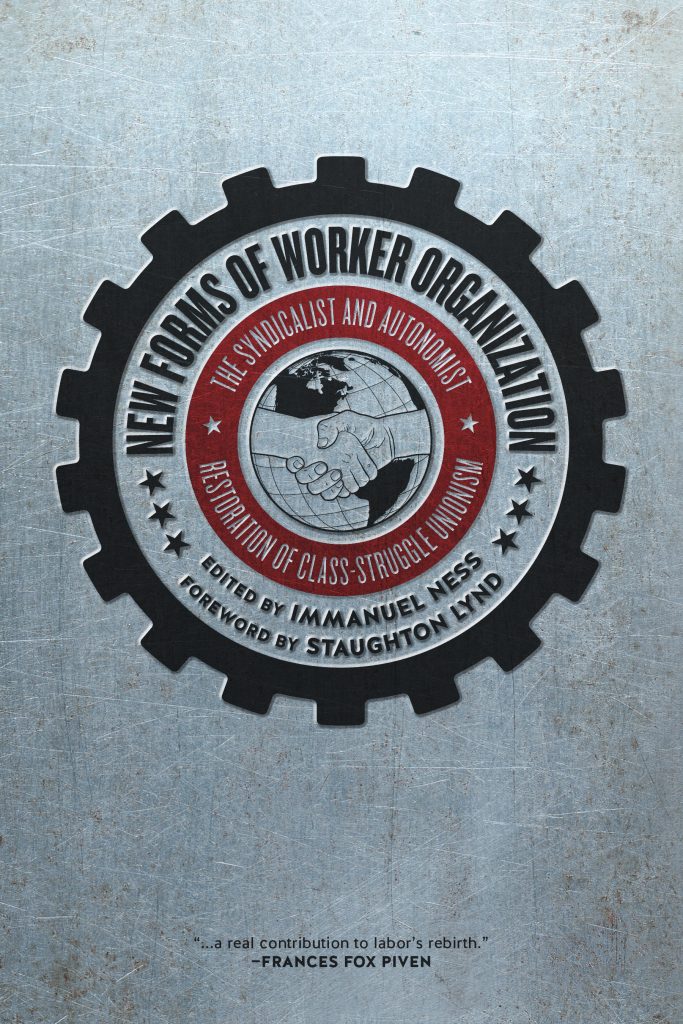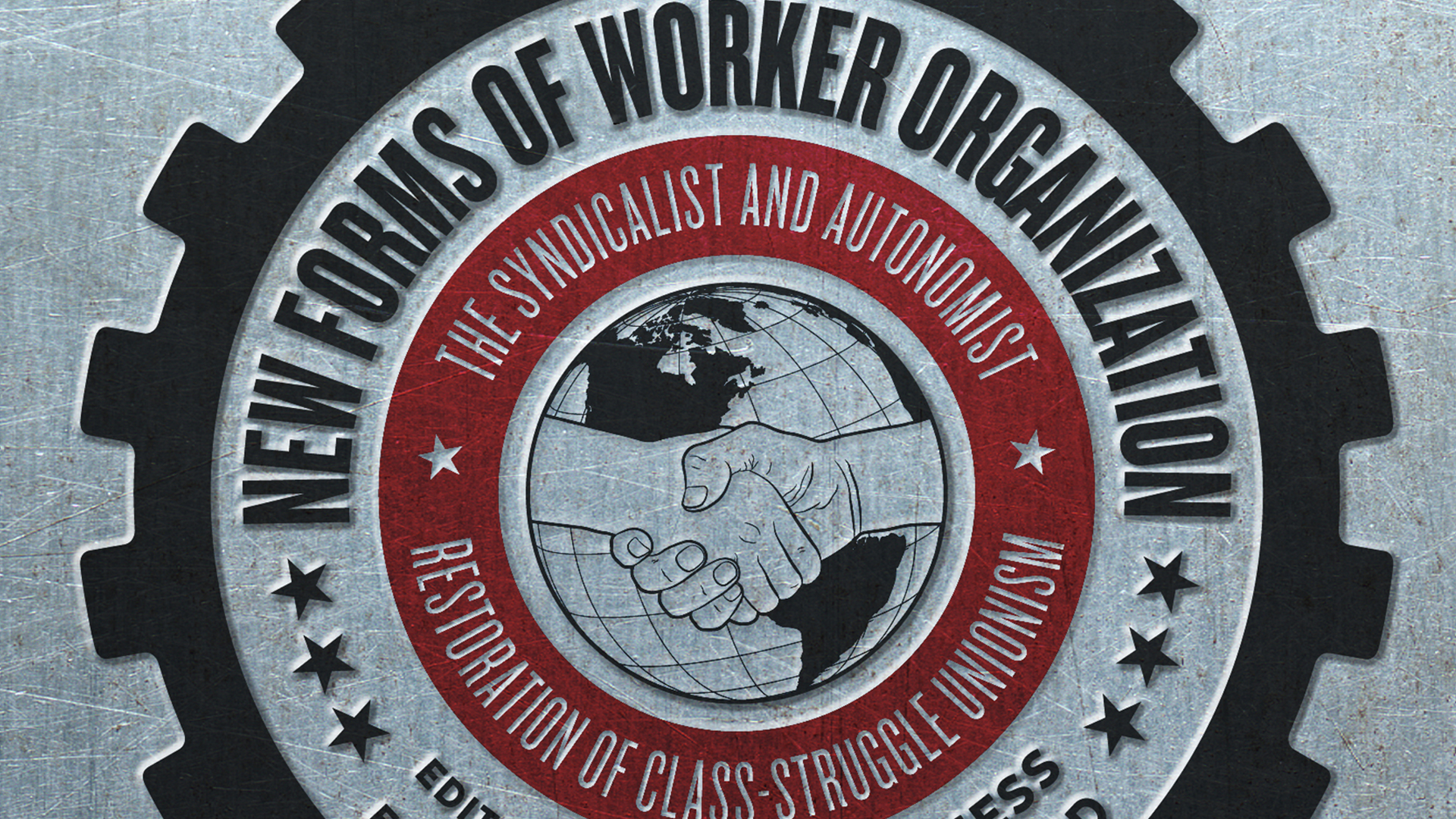
By Kevin Carson
Center for a Stateless Society
August 18th, 2014
Immanuel Ness, ed. New Forms of Worker Organization: The Syndicalist and Autonomist Restoration of Class-Struggle Unionism (Oakland: PM Press, 2014)
In his foreword to the book, Staughton Lynd describes the official model of unionism in the United States, first pioneered by the company unions under the American Plan (especially by the company union in Gerard Swope’s GM), and then codified into law by the Wagner Act:
- Unions compete to become the “exclusive” bargaining representative of a so-called appropriate bargaining unit. The employer has no legal obligation to negotiate with a union made up of a minority of its employees.
- When a given union has been “recognized,” the employer becomes the dues collector for the union. Every employee has union dues deducted from his or her paycheck automatically.
- The union conceded to the employer as a “management prerogative” the right to make unilateral investment decisions, such as shutting down a particular plant or workplace.
- The union deprives its members of the opportunity to contest such decisions by agreeing that there will be no strikes or slowdowns during the duration of the collective bargaining agreement.
In short, the main function of Wagner-style business unions is to enforce labor contracts against their own rank-and-file and “let management manage,” in return for productivity-based wage increases, seniority an a grievance process.
This book is about a different kind of unionism, breaking out all over the world today. “It is horizontal rather than vertical. It relies not on paid union staff but on the workers themselves.”
These kinds of alternative unions, editor Immanuel Ness argues, “are more relevant to today’s workers than institutional and bureaucratic compromises with the capitalist class and state.” The new unions are a revived form of a form of labor organization that was dominant before Wagner and similar labor charters with capitalist states around the world. “…[T]he new workers’ organizations are descendants of the socialist and anarchist labor formations of the late nineteenth and early twentieth centuries.”
Some of the new formations have a praxis centered on prefigurative politics, envisioning their action in the workplace as part of a larger fight to transform the entire economy.
The book is made up of a series of case studies of independent and democratic unions — drawing on a variety of autonomist, syndicalist and other ideas, but all “fundamentally opposed to bureaucratic domination, class compromise, and concessions with employers” — in the global North and South.






